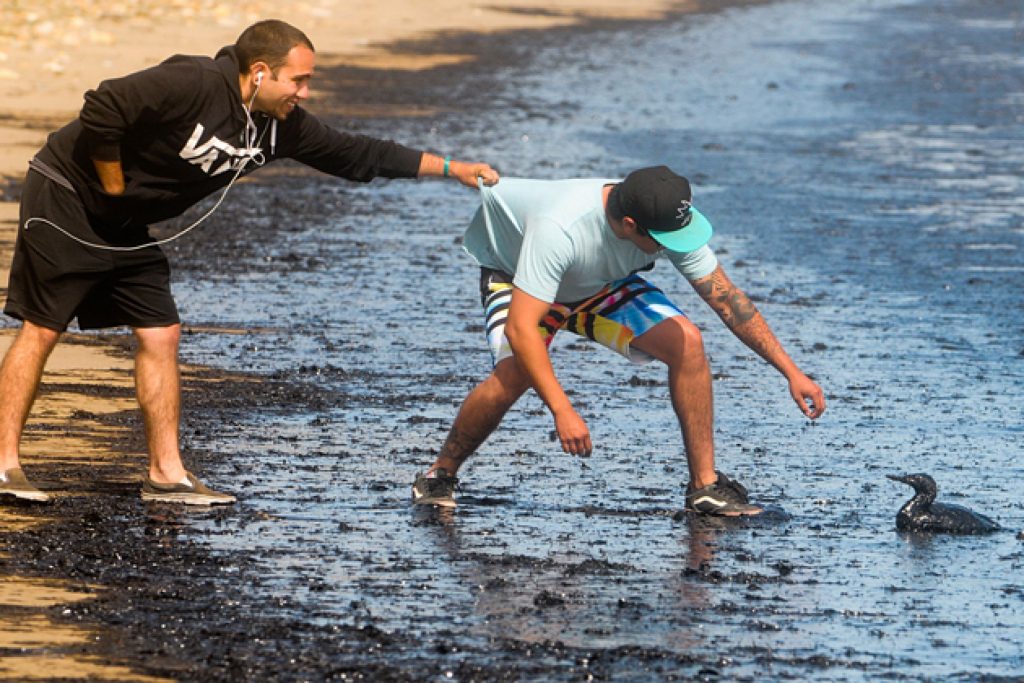The Eccentric Surf Scoter

One of my favorite species of birds is the surf scoter, a sea duck that is abundant during October through April along the North American west coast as far south as central Baja (Mexico), after breeding in the boreal forests and tundra of Alaska. It also winters on the east coast from Nova Scotia to Florida. While not native to Europe, a few vagrants are blown off course or become disorientated and finish up wintering as far south as the UK. It was one of these vagrants that I witnessed at Spurn Point back in the early 1960s which supposedly was the first surf scoter ever seen there.
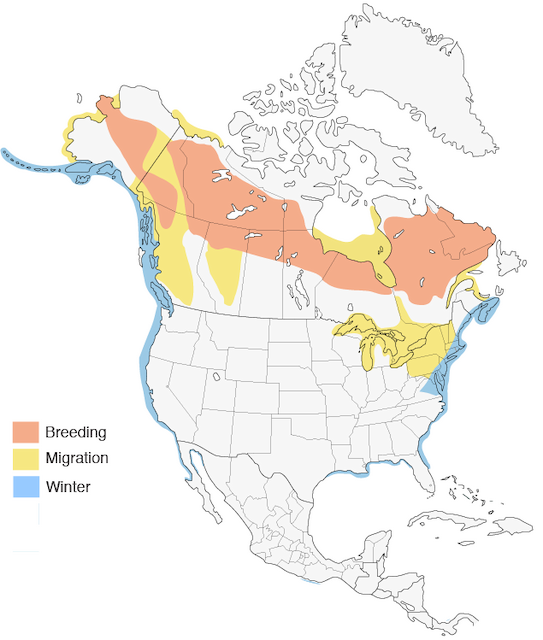
Surf scoter Range Map
These large, stocky birds, are 19 to 24 inches (50 to 60 cm) in length and are often are seen in flocks during winter on North American estuaries and marine waters close to shore. They usually are closely packed and may take off as a group if disturbed. Even in summer, the species appears as an occasional summer resident in California and can be seen around river mouths and near harbors. Consequently, what was rare for me in the UK is now commonplace in California.
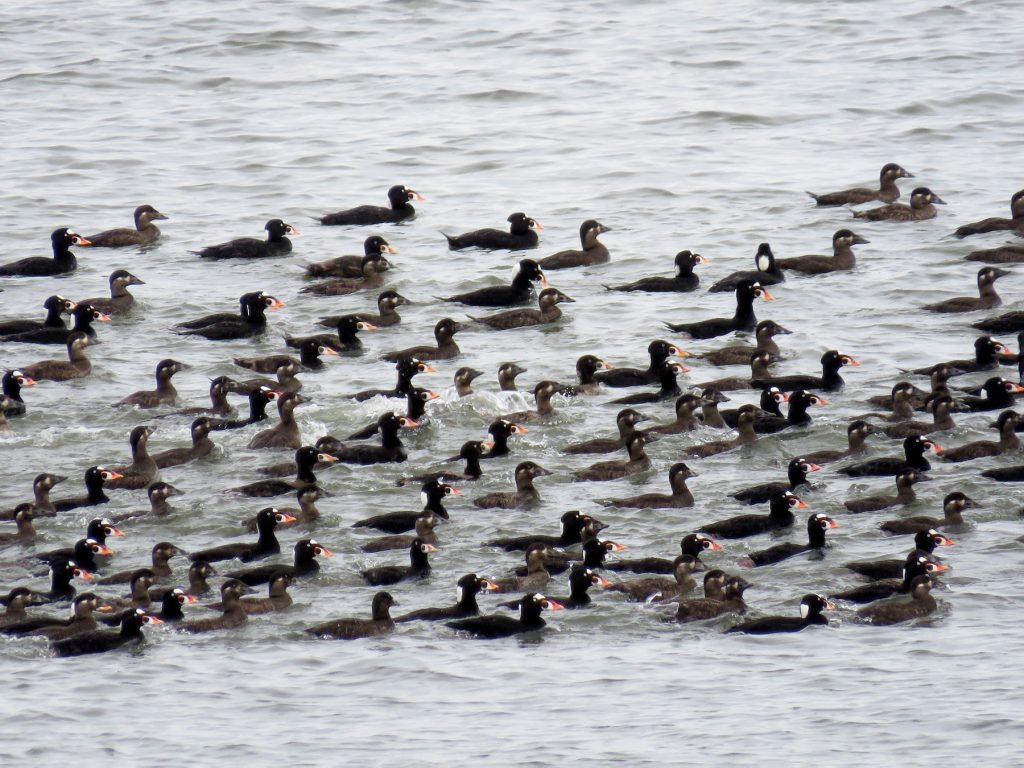
Flock of surf scoters
However, one of their risks where I live is oil spills. The recent October 2021 Huntington Beach spill in southern California is an example even though the spill was reduced to only 25,000 barrels by the time it was over. Deceased birds in that spill have been identified as the American coot, black-crowned night heron, brown pelican, two species of cormorant, western and California gulls, Northern fulmars, several shearwaters, and a red-footed booby. Fortunately, no surf scoters were reported. Birds that survived their oiling included ruddy duck, snowy plovers, sanderling and western grebes. However, avian casualties are notoriously difficult to calculate. For example, the April to September 2010, 87 day Deepwater Horizon spill, that released over 200 million gallons of oil into the Gulf of Mexico, is estimated to have killed over 100,000 birds, even though only 8,200 carcasses were collected.
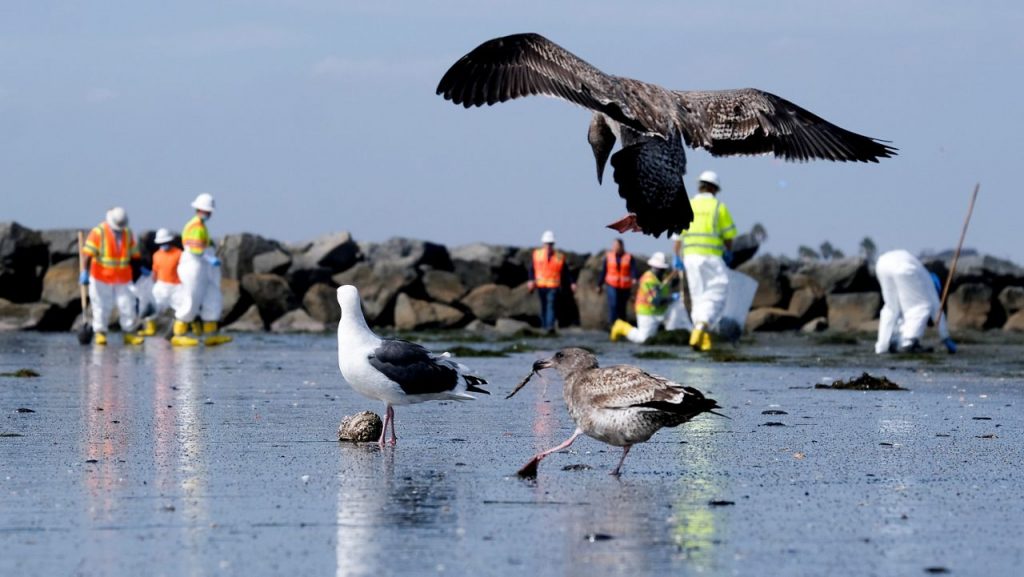
Huntington Beach oil spill
When birds become oiled, their outer feathers clump together and are no longer able to repel water which percolates into their inner down feathers, causing hypothermia. The bird may then die of exposure, sink and drown, or if the bird makes it to land, becomes vulnerable to predators because it cannot fly.
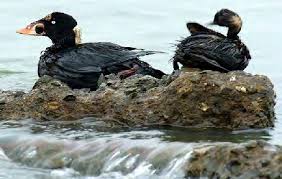
Surf scoter impacted by the Cosco Busan oil spill
The November 2007 oil spill in the San Francisco Bay of an estimated 53,000 gallons, caused by the Cosco Busan hitting the San Francisco – Oakland Bridge, created a much greater impact because it occurred where and when there were hundreds of thousands of migrating and wintering birds. 27 species were affected, and an estimated 2500 died, with many more than that likely left to perish elsewhere. The surf scoter was top of the impact list, with an estimated four percent of its wintering population in the Bay Area being lost as a result.
Surf scoters are members of the sea duck family that includes eiders, goldeneye, bufflehead, Harlequins, and mergansers. Their first name comes from their habit of foraging in ocean surf, whereas the origin of the word “scoter” is unknown. Male adult scoters are unmistakable when seen on the water, with velvety black plumage, a conspicuous white forehead and nape, and a large swollen, irregularly-shaped, multi-colored bill (orange-yellow, white and black). The species is sexually dimorphic (exists in two distinct forms), with the female possessing duller brown feathers, slightly darker above than below, and sometimes pale patches of plumage on the cheek and nape. The female’s bill is dark grey.
The surf scoters’ diet includes mollusks, crustaceans, some plant material, small fish, herring spawn and aquatic insects, which are caught by diving and using their specially adapted bill.
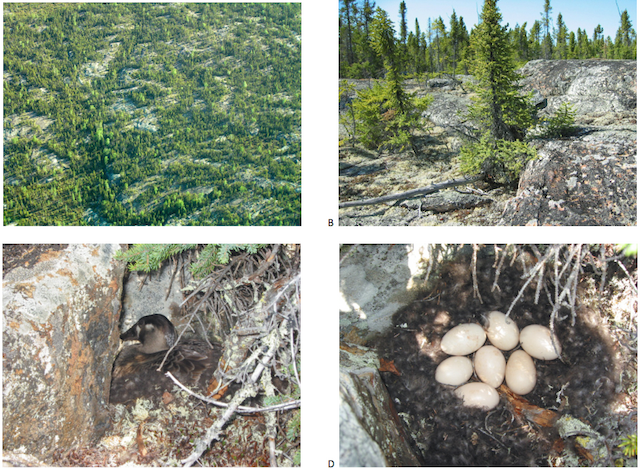
Surf scoter breeding
Population numbers are not well understood but generally are believed to be in decline. For example, in 1987, around 30,000 birds were estimated as wintering in the San Francisco Bay, whereas that number has fallen to around 3,000 in recent years. Even so, rough global estimates estimate around 500,000 individual birds, but with numbers falling. Reasons for the decline are unclear but probably includes global warming that is reducing the size of their breeding grounds, increased development in urbanized estuaries, contamination and pollutants affecting reproduction, invasive species affecting the food chain, and individuals falling prey to bald eagles, river otters, orcas, and sea lions.
Even so, they are a delight to watch as they congregate together, bob as black specks on the water, plunge head-first to catch their prey, and fly short distances to improve their foraging success. Sometimes they are not alone.
It should be noted that there are two other types of scoter resident in North America, the black scoter and the white-winged scoter. Both are nearly circumpolar in their distribution north of the Equator, and in Europe there is also the common scoter and velvet scoter. Until 2009 the Eurasian common scoter and the North American black scoter were considered the same species but are now recognized as separate species. Similarly, the Eurasian velvet scoter and the North American white-winged scoter have been considered the same species.
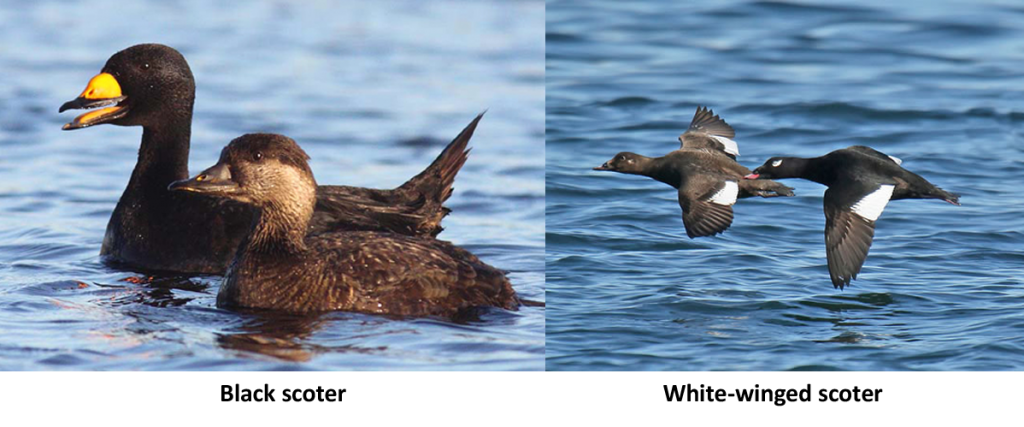
The black scoter adult male is all black and characterized by a bulbous bill that is mostly yellow. The female looks like a female surf scoter, but with more extensive pale areas on its cheeks and neck. The white-winged male is mostly silken black with large white patches on its wings, an orange-red bill, and a white comma-shaped patch around the eyes. The female is dark brown, lighter below, with two smudgy white facial patches and white wing patches.
Additionally, it is not unusual to have other species of duck mixed in with flocks of scoters. Two species of duck that are primarily black and white, and might cause confusion, are the goldeneye and bufflehead. The goldeneye is medium sized, has a much smaller bill that is blackish in color, has an iridescent green head, a white spot behind the bill, and its neck and underparts are white, unlike the dark feathers of the scoter; females have a warm brown head and a yellow spot at the end of their bill.

The male bufflehead is conspicuously white and black, with a white chest and flanks, an iridescent purple-green head and throat, and a large white patch on the back of the head. The female is brownish with a single white patch on the cheek.
Finally, do not confuse scoters with the much smaller American coot that is dark brown, other than for its white bill tipped in black. Also, it prefers fresh-water lakes, ponds and rivers rather than marine water.

American coot
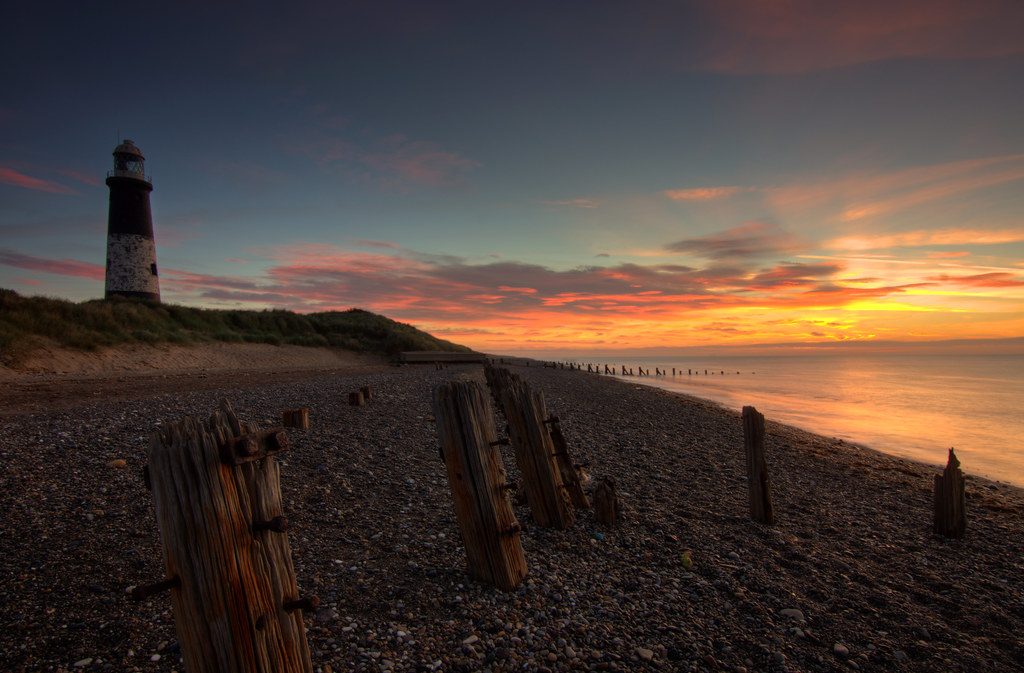
Spurn Point
Hopefully, we will spend more time in the future studying and increasing our knowledge of these spirited sea ducks, and protecting their numbers. Progress has been made with establishing procedures for oil spills. Much has been learned as a result of several major spills: the 1967 Torrey Canyon disaster off the coast of southern England that released 25 to 35 million gallons of crude oil; the Amoco Cadiz incident off the northern French coast in March 1978 that released nearly 60 million gallons, killing an estimated 20,000 birds; the Santa Barbara catastrophe of 1969 that spilled up to 4.2 million gallons of oil; and the Exxon Valdez 1989 incident that leaked about 11 million gallons of crude oil.
